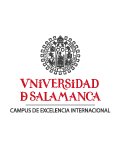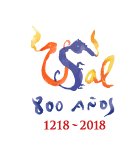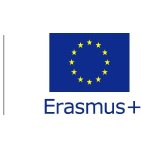ASSESSING SPOKEN PRODUCTION: A TEACHERS’ GUIDE TO USING ‘PECHA KUCHA’ PRESENTATIONS IN THE UNIVERSITY LANGUAGE CLASSROOM
This best practice is part of a
suite of language assessment activities designed within the context of the
E-Lengua project and implemented at Trinity College Dublin’s undergraduate
institution-wide language programme Designed to assess speaking and writing
skills within the Blackboard Learn virtual learning environment, three new
teaching and assessment activities were developed in order to promote engaged and
interactive language learning and assessment supported by the use of innovative
ICT activities within a higher education context. The Blackboard Blog project
assesses written interaction. The Pecha Kucha project assesses spoken
production. The Popplet project assesses written production. Together, these
three collaborative tasks were designed to form part of a cycle of group
projects completed over two terms of class.
This teachers’ guide provides support for the use of the Pecha Kucha presentation format in the language classroom as a means of teaching and assessing spoken production skills at B1 and B2 common European proficiency levels. Pecha Kucha is a slide presentation style invented in Japan in 2003, created by architects Mark Klein and Astrid Dytham (Klentzin et al., 2010), initially used for managing multiple presentations by young designers. Pecha Kucha is a Japanese word (ペチャクチャ) which means chit chat or chatter, and the approach has increasingly been used in Europe for crowdsourcing and pitches in Pecha Kucha themed nights.
Very much in the same family as presentation styles such as lightning talks or the ‘thesis in three’ format, Pecha Kucha is a rigid and fast-moving oral presentation format for individual learners which employs 20, mostly visual, slides which are shown for strictly 20 seconds each (6 minutes and 40 seconds in total). This format keeps presentations concise, fun and fast-moving. It has been described as a kind of visual haiku, a way to deliver a more striking or memorable talk rather than using more conventional presentation methods. Students are requested to present on any topic of their choice, using this visual slide format as their prompts.
Pecha Kucha presentations can be delivered synchronously, live or via video calling applications, or asynchronously as a pre-recorded and timed slide/audio presentation which is then uploaded to the university’s virtual learning environment (typically, Moodle or Blackboard) for assessment. In the preparation of a Pecha Kucha presentation, learners must select images and address issues of copyright, visibility etc., craft a script or story that maintains their listeners’ attention, and manage the technical details of a timed and pre-recorded slide presentation. These are valuable transferable skills which are gained during the assessment preparation.
Pecha Kucha has been the subject of academic discussion and investigation as a presentation format conducive to fostering student learning and engagement. This guide contains some of the most useful online links regarding use of Pecha Kucha, as well as a research bibliography of more than a dozen recent academic articles reporting on the use of Pecha Kucha in the university language classroom.
PechaKucha 20x20
https://www.pechakucha.org/
2. Challenging the Presentation Paradigm (in 6 minutes, 40 seconds): Pecha
Kucha
https://www.chronicle.com/blogs/profhacker/challenging-the-presentationparadigm-
in-6-minutes-40-seconds-pecha-kucha/22807
3. Pecha Kucha in the Classroom
http://tlt.cofc.edu/2012/10/25/pecha-kucha-in-the-classroom/
4. Pecha Kucha: tips, resources & examples
https://catherinecronin.net/teaching/pecha-kucha/
5. Pedagogical Uses for Pecha Kucha
https://www.teachingkb.cidde.pitt.edu/teaching-learning/pedagogical-uses-forpechakucha/
6. Pecha Kucha – for the language and communications classroom
https://peacheypublications.com/pecha-kucha-for-the-language-andcommunications-
classroom
7. The Power of Pecha Kucha
http://www.anthonyteacher.com/blog/the-power-of-pechakucha
8. How to Make Great Presentations the Pecha Kucha Way
https://globaldigitalcitizen.org/how-to-make-great-presentations-with-pechakucha
9. Pecha Kucha in the Classroom: Tips and Strategies for Better Presentations
https://remixhumanities.wordpress.com/2010/11/03/pecha-kucha-in-theclassroom-
tips-and-strategies-for-better-presentations/
10. Pecha Kucha, a Presentation Format with Many Possibilities
https://literacybeat.com/2014/02/20/pecha-kucha/
RESEARCH BIBLIOGRAPHY: USING THE PECHA KUCHA PRESENTATION
FORMAT IN THE UNIVERSITY LANGUAGE CLASSROOM
1. Bang-Jensen, V. (2010). Pecha Kucha: A quick and compelling format for student PowerPoint presentations. The Teaching Professor, 24(5), 5-5.
2. Baskara, F. R. (2017). Humanistic Language Learning in the 21st Century Classroom: A Brief Look at Practice and Application. Seminar Dies ke-24 Fakultas Sastra “Cerdas dan Humanis di Era Digital: Perspektif Bahasa, Sastra Dan Sejarah”. Universitas Sanata Dharma Yogyakarta, Indonesia. 26 April 2017.
3. Baskara, R. (2015). Developing students’ autonomy in oral presentations through Pecha Kucha. In Teaching English as a Foreign Language Conference, University of Muhammadiyah Purwokerto, Indonesia.
4. Carson, L. (2017). Improving online language assessment: Using Pecha Kucha to assess spoken production in English. Caracteres. Estodios culturales y críticos de la esfera digital, 6, (2), 2017, p196 - 214.
5. Ciarrocca, R. (2015). Fostering public speaking through Pecha Kucha in the high school English classroom. Studies in Teaching Research Digest, 1, 13-18.
6. Eriksen, K., Tollestrup, C., & Ovesen, N. (2011). Catchy Presentations: Design Students using Pecha Kucha. In DS 69: Proceedings of E&PDE 2011, the 13th International Conference on Engineering and Product Design Education, London, UK, 8-9 September, 2011.
7. Hayashi, P. M., & Holland, S. J. (2016) Pecha Kucha: Transforming Student Presentations. JALT 2016, Japan Association for Language Teaching. Transformation in Language Education, 25-28 November. Nagoya, Japan.
8. Mahaesti, R., & Syafei, A. F. R. (2018). Using Pecha Kucha presentation as media in teaching English to improve teacher’s professionalism. Journal of English Language Teaching, 7(1), 64-68.
9. Mahendra, A. W. (2018). Breaking the silence: Utilizing Pecha Kucha to promote students’ speaking skills. LLT Journal: A Journal on Language and Language Teaching, 21(1), 55-64.
10. Masters, J. C., & Holland, B. E. (2012). Rescuing the student presentation with Pecha Kucha. Journal of Nursing Education, 51(9), 536-536.
11. Murugaiah, P. (2016). Pecha Kucha style PowerPoint presentation: An innovative CALL approach to developing oral presentation skills of tertiary students. Teaching English with Technology, 16(1), 88-104.
12. Nguyen, H. (2015). Student perceptions of the use of Pecha Kucha presentations for EFL reading classes. Language Education in Asia, 6(2), 135-149.
13. Robinson, R. (2015). Pecha Kucha: How to improve students’ presentation skills. In European Conference on Language Learning, Brighton, United Kingdom.
14. Ryan, J. (2012). Pecha kucha Presentations: What are they and how can we use them in the classroom?. Shizuoka University of Art and Culture Bulletin, 12, 23-27.
15. Ruiz, C. G. (2016). Student perceptions of the use of PechaKucha presentations in Spanish as a foreign language. Proceedings of EDULEARN16 Conference, Barcelona, Spain, 4-6 July 2016.
16. Tomsett, P. M., & Shaw, M. R. (2014). Creative classroom experience using Pecha Kucha to encourage ESL use in undergraduate business courses: A pilot study. International Multilingual Journal of Contemporary Research, 2(2), 89-108.
17. Widyaningrum, L. (2016). Pecha Kucha: A way to develop presentation skill. Vision: Journal for Language and Foreign Language Learning, 5(1), 57-74.
18. Zharkynbekova, S., Zhussupova, R., & Suleimenova, S. (2017). Exploring PechaKucha in EFL learners’ public speaking performances. In 3rd International Conference on Higher Education Advances, Universitat Politecnica de Valencia, Spain.




